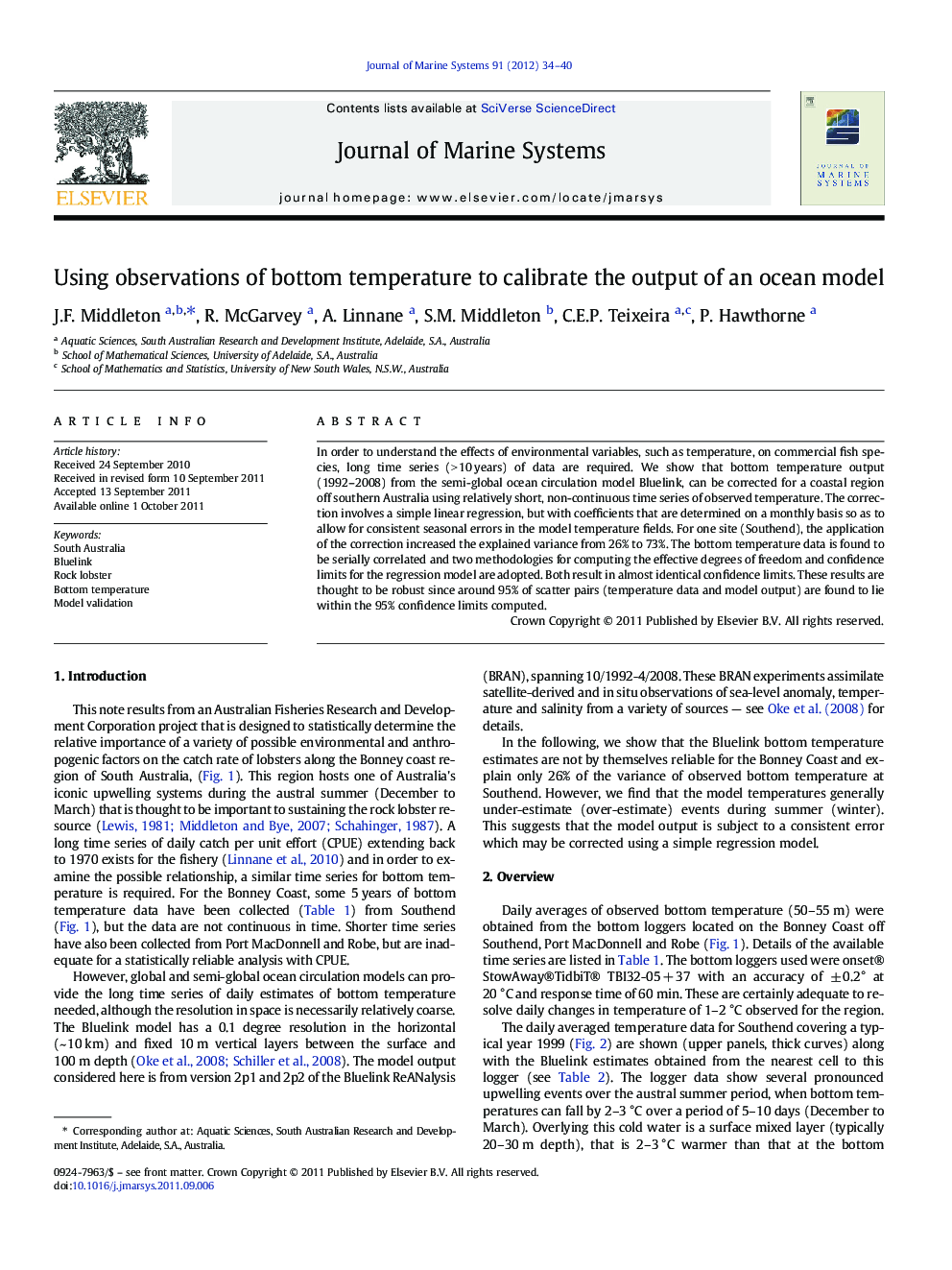| Article ID | Journal | Published Year | Pages | File Type |
|---|---|---|---|---|
| 4548328 | Journal of Marine Systems | 2012 | 7 Pages |
In order to understand the effects of environmental variables, such as temperature, on commercial fish species, long time series (> 10 years) of data are required. We show that bottom temperature output (1992–2008) from the semi-global ocean circulation model Bluelink, can be corrected for a coastal region off southern Australia using relatively short, non-continuous time series of observed temperature. The correction involves a simple linear regression, but with coefficients that are determined on a monthly basis so as to allow for consistent seasonal errors in the model temperature fields. For one site (Southend), the application of the correction increased the explained variance from 26% to 73%. The bottom temperature data is found to be serially correlated and two methodologies for computing the effective degrees of freedom and confidence limits for the regression model are adopted. Both result in almost identical confidence limits. These results are thought to be robust since around 95% of scatter pairs (temperature data and model output) are found to lie within the 95% confidence limits computed.
► Ocean model bottom temperature can be corrected using time series of observations. ► Uses linear regression with coefficients determined on a monthly basis. ► The correction increases the explained variance from 26% to 73%.
